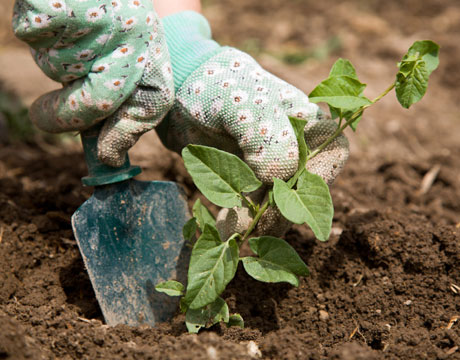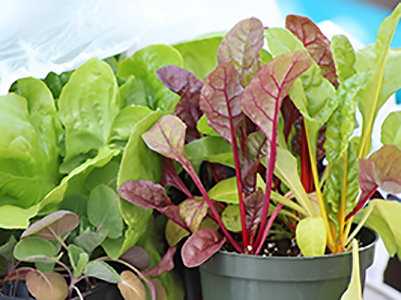Weeds can be an organic gardener’s curse. Actually, for all gardeners, weeds are the bane of their existence in some cases. This gardener absolutely detests weeding her garden, but it must be done to promote healthy growth of plants and insure a good crop. Even if you’re not an organic gardener, weed control is a problem. There really is no easy answer to this problem. It just takes time and effort to control the unwanted overgrowth in your garden. This is where mulching and composting come into play.
First of all, twice a week, run the edge of a sharp hoe just under the surface of the soil to behead tiny weeds before they grow large enough to compete with your seedlings. Once the seedlings are larger, the soil is warm and drenching rains have ended, put down a layer of mulch to hold in moisture and smother weeds. Mulch is material that can be laid down around the plants to control weeds.
Choose ingredients that allow the soil to breathe, let water in and keep light out. These can include dried–not fresh–grass clippings, chopped straw, lawn-mower-chopped leaves mixed with dried grass clippings or well-rotted sawdust (avoid fresh sawdust, as it leaches nitrogen from the soil), and pine needles are all good choices. Apply the mulch several inches thick. Be warned that if you use grass clippings or weeds, you run the risk of bringing insects or diseases into the garden if these are not composted. Either of these types of mulching can become incubators for insects, so it’s best to compost them before using as mulch.
A thick layer of mulch keeps light from reaching weeds. Without adequate light, the plants don’t produce enough chlorophyll to enable further growth. Most of these plants sicken and die before you even notice them. The few plants that do manage to stick their leaves into the light will be shallowly rooted and very easy to pull. Organic mulches—straw, grass clippings, leaves, shredded bark—nourish the soil as they decompose. They are fairly effective weed barriers.
You can also apply a layer of compost to control weeds. Be warned that if you use kitchen waste to make your compost, you could have some ―volunteer‖ plants that crop up. One of my neighbors was pleasantly surprised to find cherry tomatoes growing where she had composted. She included discarded tomato seeds in her compost pile and these seeds germinated on their own making a really nice little surprise crop for her!
If you live in a wet climate, you may wish to avoid mulching and keep cultivating, because mulch can lead to waterlogged soil and fungal diseases. In a climate subject to dry spells, mulch can dramatically reduce plant stress by helping the soil retain moisture. If you irrigate, feel under the mulch to be sure the water is getting through. Mulch is great, but there are two ways to misuse it.
One is to mulch heat-loving plants too early in the season, before the soil warms up. Mulch smothers weeds, but it’s also a good insulator. Cantaloupes, tomatoes, potatoes, watermelons, peppers and egg plants will produce better if mulched. Another mistake is to put down too little mulch. It looks good for a few weeks, but then weeds poke through, and they must be hand pulled, for there’s just enough mulch covering the ground to make hoeing impossible. Insufficient mulch gives your plants much less drought protection.
How much is enough? Well, maybe this will give you an idea: Sawdust; 2 to 3-inches / Shredded leaves; 8 to 10inches / Straw; 5 to 7-inches / Newspaper; 4 to 7-inches / and Grass Clippings; 5-inches when you first spread them.
Another way to control weeds is through various ground covers. This is often called ―soil solarization‖. Soil solarization involves placing thick plastic sheeting on top of the weeds and allowing the natural sun to ―bake‖ the weeds until they die. This can take some time, so you must be patient! Many people prefer to use newspaper for their ground cover. Because the paper will naturally decompose, it is environmentally friendly as well. Simply place 4-5 layers of newspaper in between your plants and cover with a light layer of dirt so they don’t blow away! By covering up the weeds, you will be better able to control them! Also consider Kraft paper – like grocery bags – or cardboard. By using Kraft paper and cardboard, even less light can reach the weeds and makes the cover even more impenetrable.
You can suppress the growth of weed seeds early in the season by spreading corn gluten meal over the area where they’re growing. Corn gluten meal, a by-product of corn processing that’s often used to feed livestock, inhibits the germination of seeds— bear in mind, once the weeds have gone beyond the sprout stage, corn gluten will not affect them. Be wary, however. Corn gluten doesn’t discriminate between seeds you want to sprout and those you don’t want, so avoid using corn gluten meal where and when you’ve sown seeds. It works best with established plants.
Unfortunately, you will have to employ some old-fashioned methods to weed control in your garden. It can’t be avoided. Hoeing is a huge part of a successful garden. Annual weeds die when you sever the stems from the roots just below the soil surface. With a sharp hoe, you cut the weeds easily. You may want to put aside the traditional square headed hoe for this job and try an oscillating one. To hoe your garden without cultivating a backache, hold the hoe as you would a broom—that is, with your thumbs pointing up. Skim the sharp sides of the hoe blade through the top inch of the soil.
You will also have to do some hand-pulling of those weeds. It doesn’t have to be back-breaking work, though. It just takes persistence. Here’s the trick to comfortable, quick weed-pulling: Put your hands in front of you, thumbs up and palms facing your body, one hand in front of the other. Now roll your hands, like kids do when singing “This old man goes rolling home.” Pinch your forefinger and thumb together as you reach the outermost edge of the imaginary circle your hands are tracing and move your arms to the side as you roll your hands. With practice, you will be surprised by how quickly you clean up a row in the garden with this movement.
Finally, organic weed control can be done easily by placing common household vinegar in a spray bottle and apply to those weeds. Vinegar is the organic equivalent of the commercial Round-Up, so be careful when applying around thriving plants.







0 Comments